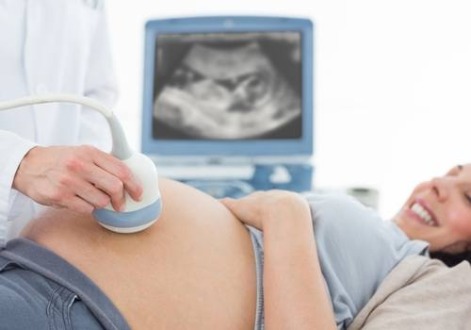
What is Fetal Ultrasound (Monitorization)?
Fetal monitoring is a way for your doctor to check your unborn baby's health in the womb. It is used when there is labor pain and during childbirth. Sometimes this follow-up can be done earlier in pregnancy. This follow-up does not prevent a problem from occurring. But it can alert your doctor about your baby's health condition. There are different monitoring methods. Each method has its own advantages or disadvantages.
Why is Ultrasound (Monitorization) Important During Birth Pains?
This follow-up helps your baby to be born healthy. If your doctor wants to monitor during labor, do not worry, he is doing it for your baby's health. Doing this does not mean there is a problem with the baby. This is the easiest way for your doctor to understand your baby's health status.
When is Ultrasound (Monitorization) done during pregnancy?
All hospitalized patients are monitored for a short time. Most of the expectant mothers are followed up during labor. Monitoring is done throughout your entire labor in the following cases:
* If artificial pain (Synpitan ampoule, etc. drugs) is given to induce labor.
* If you have Diabetes mellitus (diabetes), Gestational Diabetes (Gestational Diabetes), Hypertension, Heart Disease.
* If you are giving birth with epidural anesthesia
* If your current pregnancy is problematic or if you have had problems with previous births.
* Any time your doctor or midwife wants. You can discuss this with your doctor before giving birth.
What are the Types of Monitoring for Pregnancy Follow-up?
Fetal Heartbeats
Almost all expectant mothers and those who support the mother during childbirth (usually fathers-to-be) find it very comforting to listen to the baby's heartbeat.
Heartbeats are tracked in two ways:
1. Heartbeat is followed by a transducer attached to the abdomen with an elastic belt from outside the body. The transducer finds and counts the baby's heartbeat. This transducer is repositioned as the baby moves. During this monitoring, you must lie constantly.
2. A special instrument is made to measure from inside the body. This device is placed on the baby's head vaginally. The wire attached to the instrument is attached to your leg and the end is attached to a monitor. Thus, your baby is directly monitored during the entire labor. In order to use it, your cervix must be opened. Without this opening, it is not possible to reach the baby's head. In addition, your water bladder must be opened in order to use this tool. You don't need to lie down all the time as this tool moves with you.
Uterine Contractions
Contractions, that is, labor pains, constitute an important part of labor. By following these contractions, how your labor is progressing is followed. Birth preparation courses teach you how to follow these contractions and how to relax with breathing techniques.
Contractions can be tracked in two ways:
1. A pressure-sensitive instrument is placed on the outside of the body, on your abdomen. The name of this instrument is toko. It is placed on your abdomen with an elastic waistband. The frequency of your contractions and how long they last are recorded on a piece of paper. The most preferred method
2. A thin and soft tube is inserted into your uterus, right next to the baby. It similarly measures the frequency, duration, and strength of your contractions. In order to use this method called internal monitoring, your water bladder must be opened.
Telemetry
Some hospitals have the opportunity to monitor the patient remotely. With this device, your baby's heartbeat and uterine contractions can be continuously monitored by doctors in the hospital. This is especially convenient in the early stages of labor and allows the pregnant woman to walk around and even be followed from her home. Currently, there is no clinic in our country that uses this method.
Tags